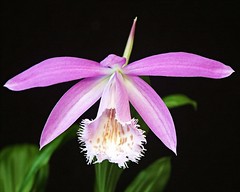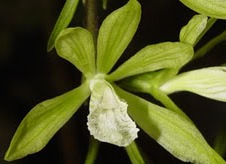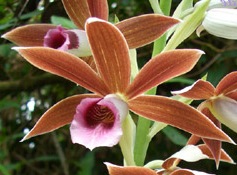Did you know that you can grow orchids in your garden, in the ground? Most people think of orchids as showy, greenhouse beauties, but those plants represent only one type of orchids. Among the orchid family, there are over 200 species that flourish in the soil. These plants are classified as terrestrial orchids and grow wild in subtropical and tropical areas of America.
Considered woodland plants, terrestrial orchids share some characteristics with their greenhouse counterparts. These plants come in many shapes and size, produce blossoms in a rainbow of colors, and are famous for filling the night air with wonderful aromas. Unlike their tropical cousins, however, these woodland flowers do not produce aerial roots or stems that climb trees and bushes. They prefer to keep their roots firmly planted in the earth.
Terrestrial orchids don’t need a lot of fertilizer, either. As a matter of fact, most of these ground-loving plants can’t handle a lot of fertilizer. Usually all that’s needed to feed these flowers is leafy compost at planting and later as the plants mature. If your soil is poor in nutrients and you must fertilize, use a very weak solution. Take the food you would normally give flowers and dilute it to one-quarter strength.
One difference between terrestrial orchids and other orchids that often surprises people is their ability to tolerate cold temperatures. Many of these species survive well in freezing temperatures, and some actually require sub-freezing conditions in order to bloom. Like tulips and other bulb plants, these orchids go dormant through the cold weather months and grow and bloom again when spring arrives.
Terrestrial orchids can be categorized into two general groups: individual growers and clumps/tuft growers.
Within the individual growers (also called solitary) there are two distinct growth habits. One group produces both their leaves and their flowers from one stem, which sprouts from an underground tuber or corm. This single stem is leafy and produces an inflorescence at its end. After the blossom is completely open and seeding is complete, these orchids drop their leaves, or become deciduous. The tubers or corms experience an annual dormant period, then continue their life cycle.
The other group of solitary growing terrestrial orchids produces a separate leaf stem and a separate flower stem. Each of these stems sprouts from a distinct bud on the rhizome. An example of this type of growth can be growth can be found in flowers among the Nervilia, Eulophia and Pachystoma genera.
Terrestrial orchids that grow erect are usually evergreen and keep their leaves for a year or more. Leafy pseudobulbs provide new growth, usually from the base, as seen in Phaius, Liparis and Acanthephippium genera.
Plants among the genera of Erythodes, Macodes, Hetaria and Zeuxine provide beautiful examples of creeping Terrestrial orchids. The rhizomes of these plants are usually fleshy with long internodes. Axillary buds grow below the apex of the rhizomes and produce upright leaf and flower spikes. After flowering ends, and sometimes after the plant loses its leaves, new growth begins. The original upright spike falls and is absorbed by the rhizome.



